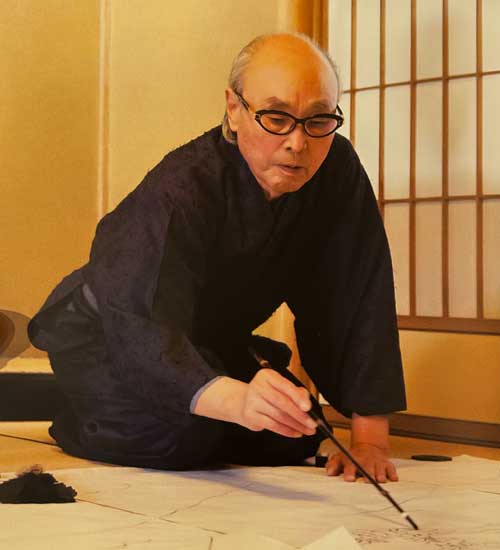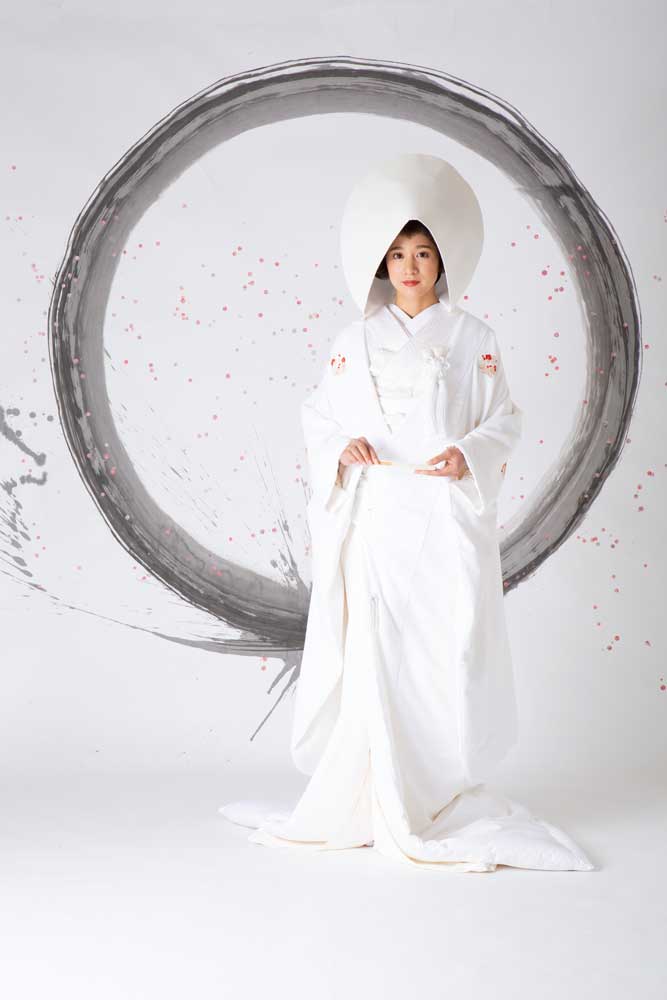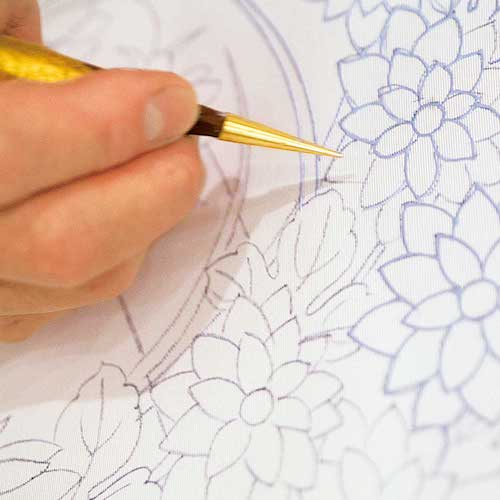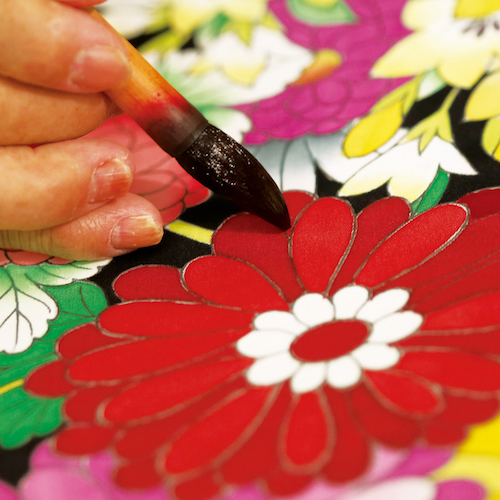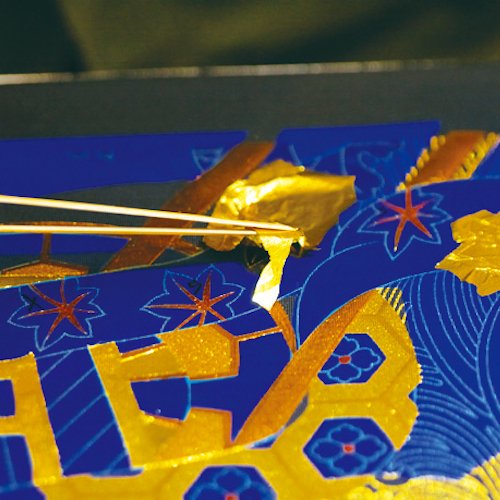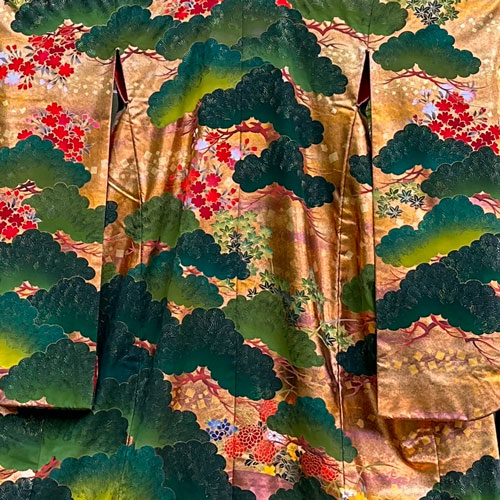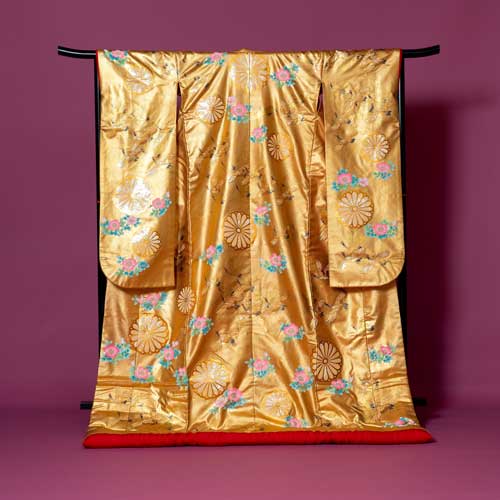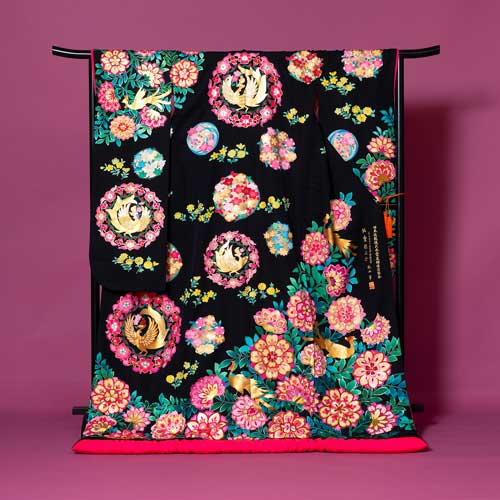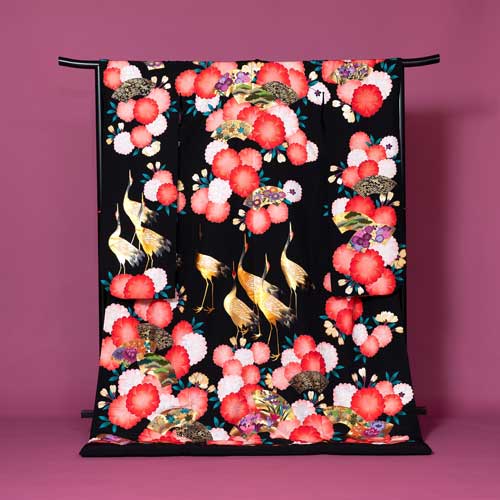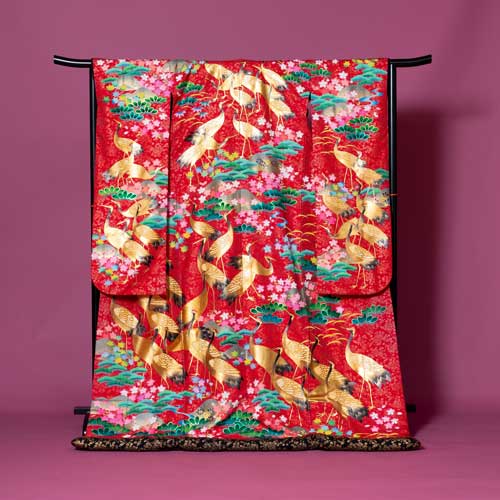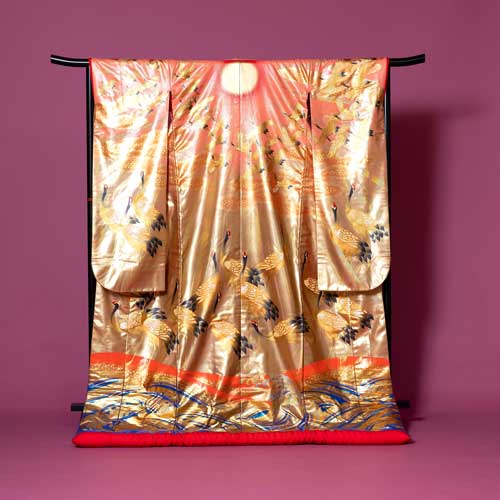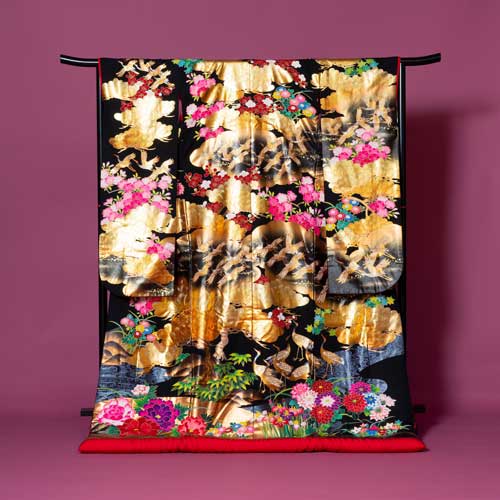Akira Akiyama is one of Japan's leading Akira Akiyama is one of Japan's leading Hon Hand-painted Yuzen artists.
His numerous bridal gowns are a symbol of Japan's beautiful bridal culture, and their beauty and artistry have played an important role in spreading Japanese wedding culture throughout the world.
His work can be described as a true work of bridal costume art, worn by brides at weddings all over Japan and playing an important role in shaping the image of the Japanese bride today.
His bridal gowns are characterised by his unique style, which is based on the use of hon-hon hand-painted yuzen dyeing, hon-urushi lacquer, hon-kai raden (mother-of-pearl inlay), hon-kinpaku (gold leaf) and other materials. All of them are handmade, and it takes about three years to complete one garment.
He is loved not only by the bridal industry, but also by celebrities in the economic, entertainment and sports worlds, and more than 100 pairs of stars, including Shigeo Nagashima, Sadaharu Oh, Hiroshi Itsuki and Shin Takuma, have chosen his creations.
Born in 1931, Akira Akiyama studied dyeing crafts in 1949 and started his career in the manufacture of high-end yuzen wedding costumes.
In 1954, he founded Marusho Corporation, a company for the creation of high-end wedding costumes. Since then, he has held an annual exhibition of yuzen costumes in Kyoto.
In 1993, he organised a costume exhibition in Germany and donated his work; in 1995 he received the Traditional Culture Award. He is still active as a yuzen artist.
